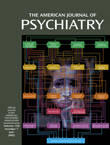Diseases of the Mind and Brain
Rett’s syndrome is a childhood neuropsychiatric disorder that represents one of the most common causes of mental retardation in young girls. In boys, the disease leads, with few exceptions, to death in utero. Individuals with the disorder are born with normal mental function, but they begin to show behavioral, cognitive, and neurological abnormalities by 6 to 18 months of age and deteriorate mentally thereafter. The disease results in reduced life expectancy but shows considerable variation in severity. Many girls with Rett’s syndrome stabilize by puberty and survive into their third decade. The etiology of Rett’s syndrome is a family of deletion or missense mutations of the X-linked gene encoding a protein called methyl-CpG-binding protein 2 (MECP2). This protein is located in the nucleus of many types of CNS neurons and binds to cytosine residues on genomic DNA. MECP2 functions as a general transcriptional repressor by associating with chromatin-remodeling complexes, and, as such, it modulates the expression of genes. Loss of function of the MECP2 protein may result in an imbalance between gene transcription and gene silencing, thus critically interfering with gene expression and protein products in many different neurons in the CNS. This defect results in a characteristic pathological picture of smaller brain weight, greater cell packing, and neuronal dystrophy but not frank cell death or neurodegeneration. This syndrome is an example of a neuropsychiatric disorder where large-scale cell death does not occur but cellular dysfunction is nonetheless profound and widespread throughout the forebrain, midbrain, and hindbrain. It used to be assumed that Rett’s disease was a prenatal developmental disorder with postnatal expression, but it is now thought that the cellular and functional defects may be due to the absence of a continuous function of MECP2 in neurons rather than abnormal brain development. Theoretically, therefore, Rett’s syndrome may be amenable to therapeutic intervention at the time of symptom expression if a selective treatment can be found.
Address reprint requests to Dr. Tamminga, Maryland Psychiatric Research Center, University of Maryland, P.O. Box 21247, Baltimore, MD 21228; [email protected] (e-mail). Images courtesy of the Rett Syndrome Research Foundation (RSRF).

Rett’s syndrome.
The patients pictured above illustrate several clinical characteristics of Rett’s syndrome, including autonomic dysfunction (as illustrated by the unequal pupil size in the patient on the left), strabismus, dystonia, and stereotypical repetitive hand movements. These are accompanied by loss of speech and reduced interaction with the social environment.



